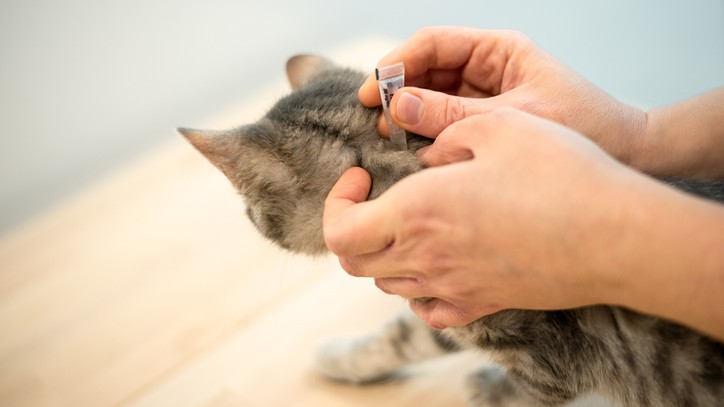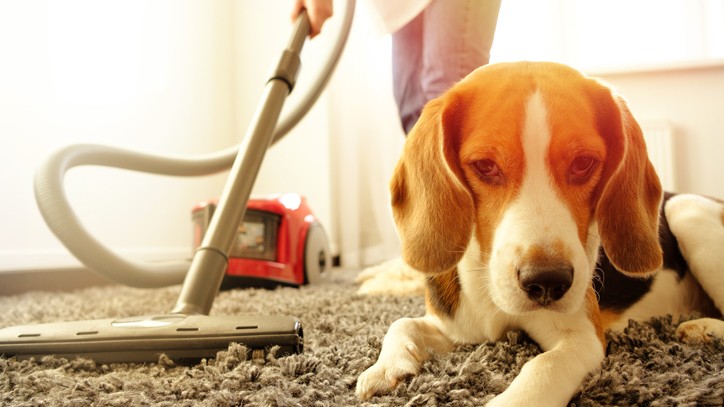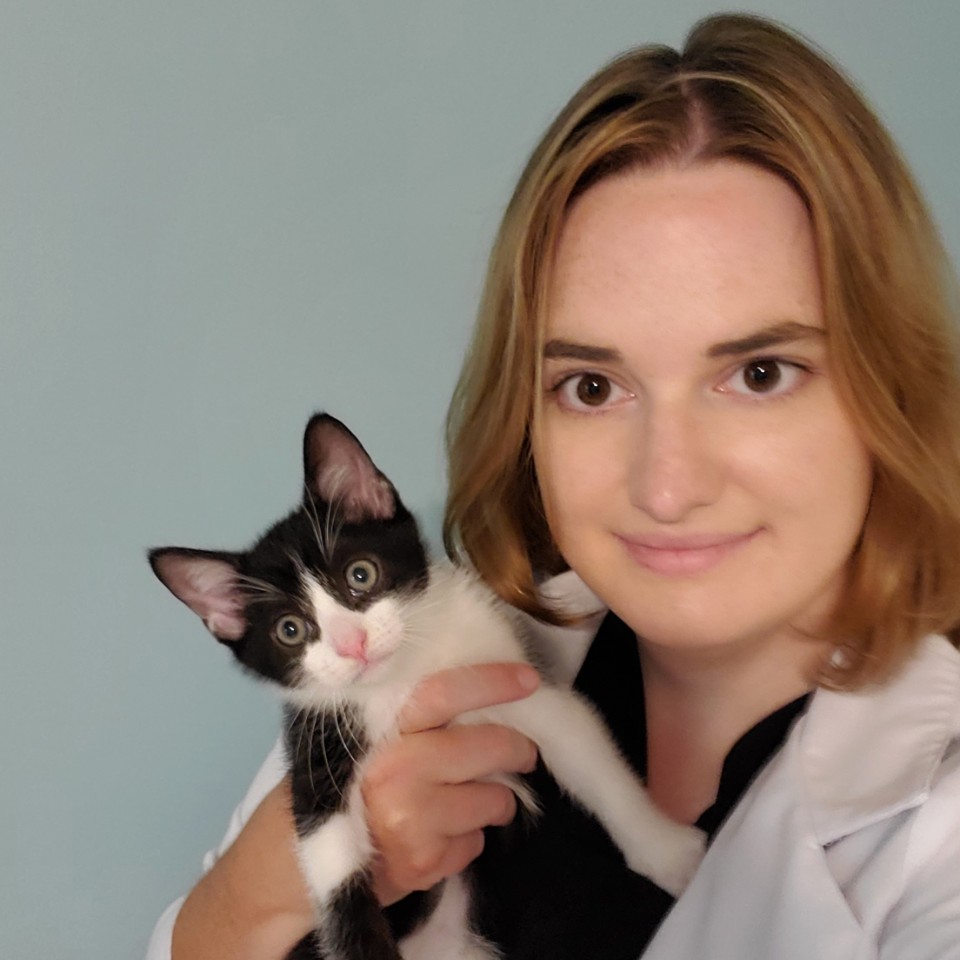Beyond the flea collar: Prevent fleas with these six steps
It takes more than a flea collar to prevent fleas. Here’s what you’ll need to keep your home free from pesky parasites

Learning how to prevent fleas is a critical step in keeping your pets healthy. All it takes is one flea to start an infestation – a single female flea can live for 100 days and can lay 40-50 eggs per day! To keep fleas out of your home, it is essential to keep all your pets up to date on flea prevention year round.
Whether it's the best flea treatment for dogs or the best flea treatments for cats, it's vital to take some form of action to stop these pesky parasites in their tracks. In addition to flea prevention, there are other steps you can take to manage your pet’s environment and keep your home flea-free. Check out our six tips for flea prevention to learn more about keeping your home safe from fleas and how you can keep your pets protected.
1. Check your pets for fleas regularly
It only takes one flea to start an infestation! Unfortunately, by the time many pet owners start noticing fleas, their living space has already become home to thousands of them. Checking your pets regularly will help you spot a problem early, so you can get it under control right away. Use a fine-toothed flea comb to look for signs of fleas in your pet’s coat. In addition to live adult fleas, keep a close eye out for flea feces, also known as “flea dirt”, which looks like small black flakes or clumps. Finding any fleas or flea dirt is a sure sign of an infestation in your home.
- Best flea treatments for cats
- Best flea collar for cats
- Best flea treatment for dogs: Effective remedies to prevent your pooch itching
2. Make sure every pet in the home is protected from fleas

Don’t forget that indoor pets can be exposed to fleas, too! Fleas and flea eggs can make their way into your home on other pets or even on your clothing. In apartment buildings, fleas have been known to accumulate in common areas or even travel from apartment to apartment. Once inside your living space, they reproduce rapidly as long as a viable host is available.
Keeping all your pets current on flea and tick prevention year-round will help discourage fleas from establishing themselves inside your home. Your veterinarian can help you choose the best products for each pet in your household. With a variety of collars, topical treatments, and oral medications on the market, you’ll be sure to find the right products to meet everyone’s needs.
3. Treat problem areas like gardens, crevices, and crawl spaces
Flea larvae cocoons are extremely hardy and can survive in the environment for up to a year. Adult fleas will emerge from the cocoons when environmental conditions are just right. Their emergence is often triggered by warmth, movement, and carbon dioxide – all the things your pet provides as he or she passes through their hiding place! Once the adults emerge, they can rapidly reproduce and create a new infestation.
If you live in an area where fleas are particularly prevalent, treating the places that may be harboring flea eggs and larvae can help prevent fleas from affecting your pets. Consider spraying your yard, under decks and sheds, inside crawl spaces, and any other cracks and crevices around your home. Just be sure to read the label on any flea control product to ensure it is safe for use around pets.
Get the best advice, tips and top tech for your beloved Pets
4. Clean carpets and bedding regularly and thoroughly
Adult fleas lay eggs on your pet, which then drop off into the environment. The fleas then complete their life cycle in the environment, safely ensconced in your carpets and upholstery. These hidden flea eggs and larva can be a constant source of infection for your pet. Frequent cleaning of high-traffic areas – especially those where your pet likes to hang out – can help reduce the environmental flea burden and prevent new adult fleas from re-infesting your pets. Vacuum carpets and upholstery frequently and wash your pet’s bedding in hot water. For added protection from fleas, sprinkle borax or flea powder onto the carpets before vacuuming and add some to your vacuum bag to prevent fleas from crawling back out.
5. Keep your guests flea-free to protect your pets

Your pets may be protected, but the pets of friends and family members who visit your home may not be. These furry friends may be bringing unwanted guests when they come to visit! Ask your guests if they’re using flea prevention before they bring their pets over to play. Make sure your pets are protected from fleas too before allowing them to interact with the newcomers or passing through areas where they’ve been. After the visit, be sure to thoroughly clean the areas where an unprotected pet was resting or playing.
6. Bring in the professionals to prevent fleas
Once a flea infestation starts, it can be a nightmare to stop. Professional pest control services have the experience and equipment necessary to stop active infestations and prevent new fleas from establishing themselves in your home. They can also help you identify problem areas in your home and advise you on the safest ways to use flea control products around your pets. Many companies also offer follow-up services to check your property during peak flea season. Professional services can be expensive, but they are often easier and more cost-effective than trying to tackle the problem on your own.
Year-round flea prevention: The best way to keep your pet flea-free
Ultimately, the best way to ensure your home stays flea-free is to keep all pets in the household up to date on prescription flea preventatives. Prescription flea preventatives from your veterinarian are safe and effective, and with so many different products on the market you’re sure to find something that fits your budget and lifestyle. In addition to keeping your pets protected, you can protect their environment by using the tips above to create a home that is uninviting to fleas, ensuring that your pets and your home are flea-free year round.
Dr. Elizabeth Racine is a small animal general practice vet covering all things pet health and wellness. Her special interests include veterinary behavior, nutrition, and internal medicine.
As a freelance writer, Dr. Racine has written content for major companies in the industry such as the American Kennel Club, Merck Animal Health, Bayer PetBasics, Elanco, and CareCredit. In her free time, Dr. Racine enjoys playing trampoline dodgeball, hiking with her beagle Dasher, and spending time with her three mischievous cats.

